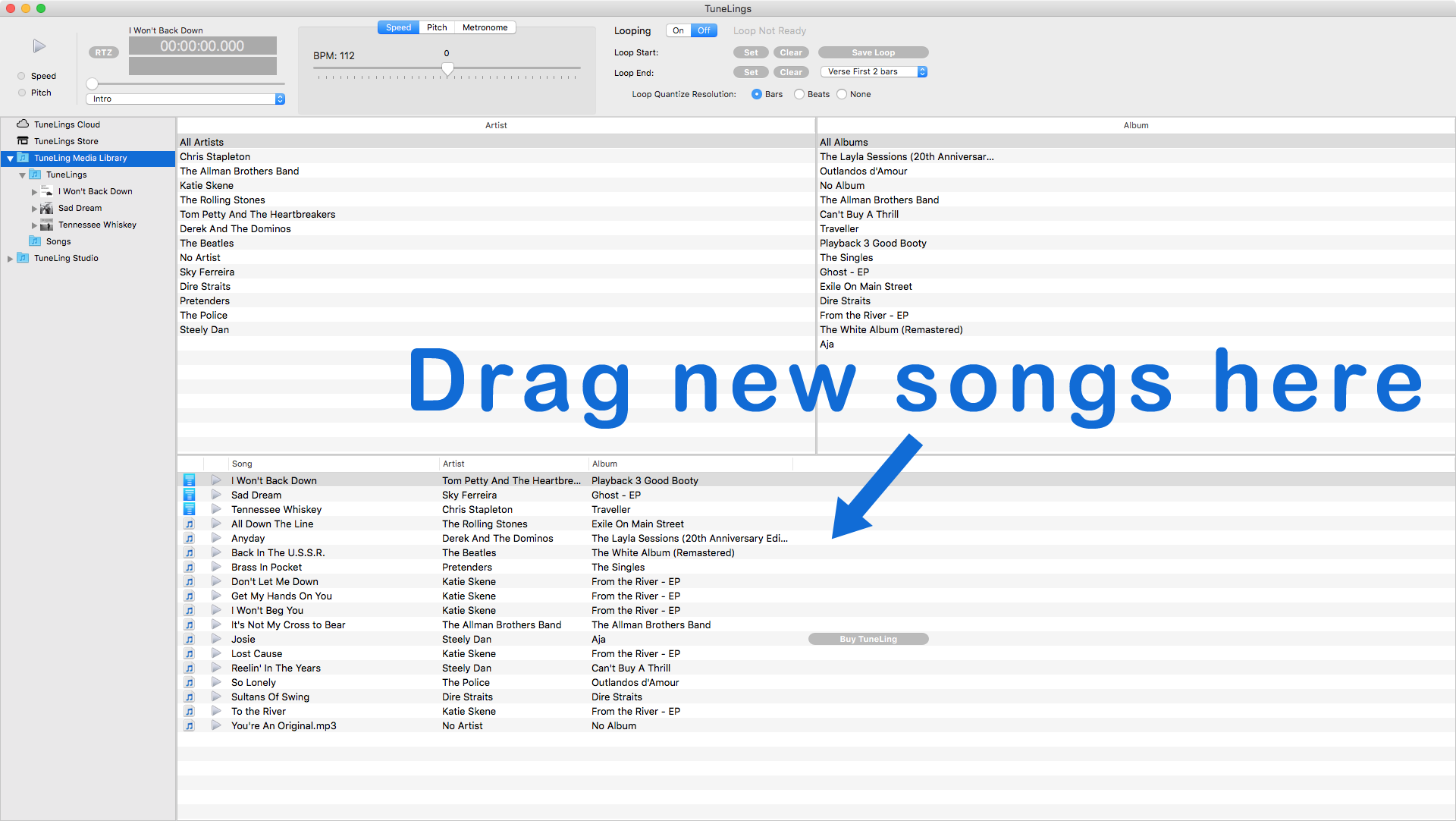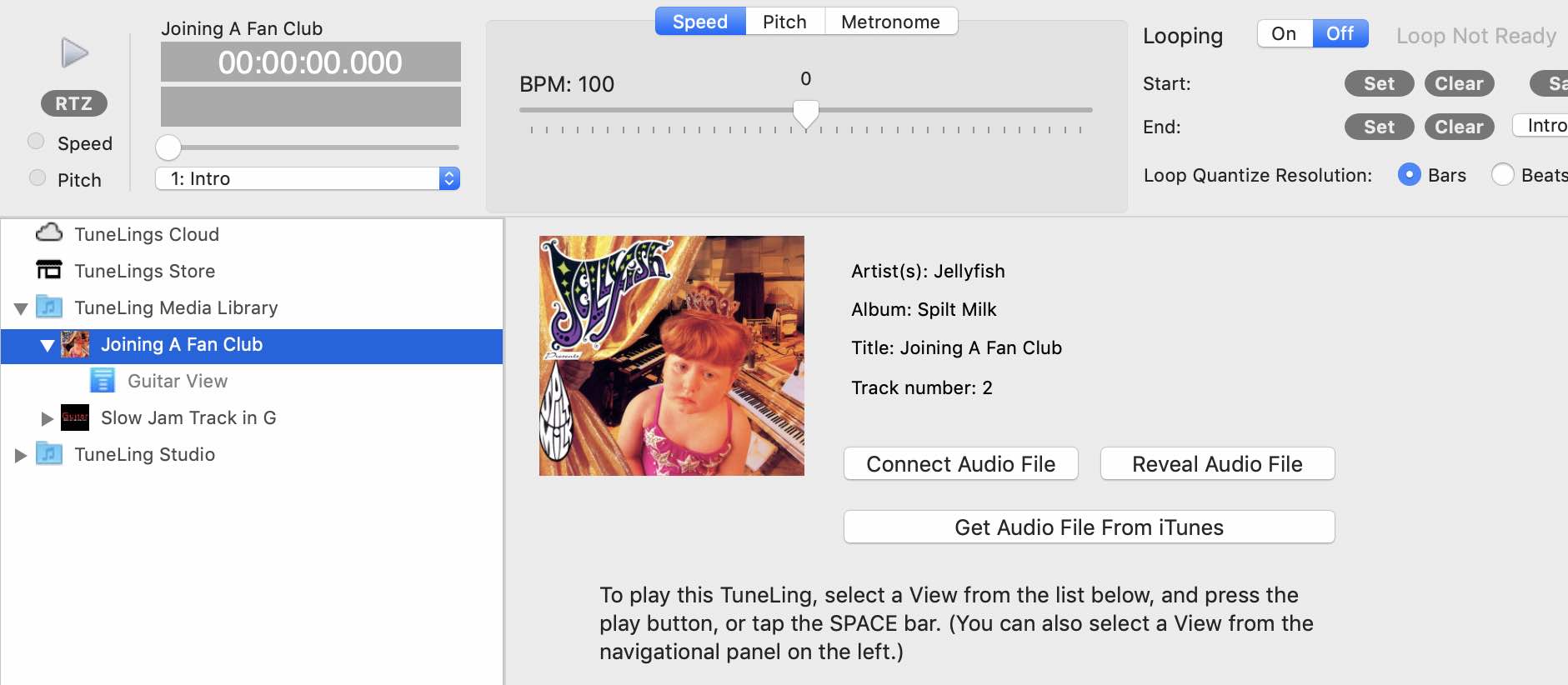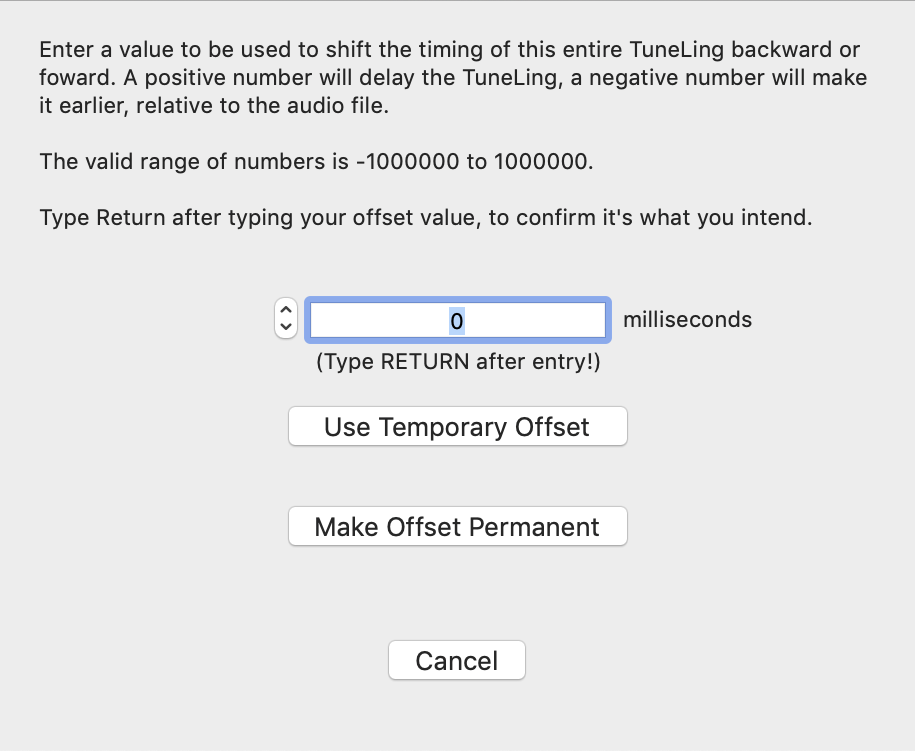All About BYOA (Bring Your Own Audio) TuneLings
Explanation
A TuneLing needs an audio file, in order to work. TuneLings from our participating artists include the required audio file, and both will be installed at purchase-time, so there’s nothing else for you to do but play!
TuneLings for all other artists are BYOA – they require you to “Bring Your Own Audio”.
To use BYOA TuneLings:
If you already have the correct audio file, just connect it to the TuneLing (illustrated below).
If you don’t, you can click the song’s black “Buy On iTunes Store” button. This will open the iTunes Store (via your web browser) and locate the correct version of the song, for your immediate purchase. (There’s also a button on the TuneLing’s overview page that does the same thing, if you download the TuneLing first.)
It’s important that your audio file is the correct version! BYOA TuneLings are usually made for a well-known version of a song, so live versions, “radio edits”, and other alternative versions are unlikely to work correctly. Our iTunes purchase links are guaranteed to be correct!
TuneLings do not, at this time, work with audio from streaming services such as Apple Music or Spotify. This may change in the future.
Note: For copyright reasons, BYOA TuneLings are usually slightly different from those that include audio. They will usually NOT have nicely-formatted, synced lyrics, but instead will show un-synced lyrics from a lyrics website. They also may omit explicit melodic information (rarely a detriment). They will always have correct chords, rhythm, annotations, loops, and all other features of the TuneLing experience.
Rationale
(This is optional reading.)
TuneLings are a flexible product – they can be sold with or without audio files, for good reasons. When we have permission from the recording’s copyright owner to distribute it, we include it with its TuneLing.
There’s also a separate copyright for a song’s composition – independent of any recording – called the publishing copyright. It governs our ability to distribute lyrics, and to display melody. It does not govern chords, annotations, comments, loops, et cetera. Indies often control this copyright as well, which allows us to display nicer-looking, synchronized lyrics, and unlimited melodic information.
We have designed this flexibility into TuneLings, so they can legally be made for almost any recording, allowing any skilled musician to make and sell TuneLings, without infringing copyright. While we prefer to work with (and compensate) copyright owners, we also want to offer an almost unlimited opportunity for musicians to earn income, by sharing their knowledge, in a fair and legal manner.
The BYOA TuneLing, and the flexible nature of its content, enable this goal.
Fun fact: when you purchase an audio file for a TuneLing from iTunes (or other licensed retailer), everyone who should get paid (artist, label, publisher, songwriter), does! So BYOA TuneLings actually benefit the rest of the “food chain”, even if we don’t get paid!
Connecting Audio To TuneLings
When you acquire a BYOA (Bring Your Own Audio) TuneLing, you must connect it to its audio file. You normally only need to do this once, but if you move a previously connected audio file, you’ll have to do it again.
There are several ways to do this:
Method 1: Drag the audio file into the song list area of the TuneLings Media Library (see illustration below), either from the MacOS Finder, or from iTunes. If you already have the TuneLing for this audio file, in most cases, they will connect automatically – the TuneLing will simply become playable.

However, if they fail to connect, then you can use method 2:
Method 2: Connect them manually. Click the TuneLing’s name (left side panel) to show its overview page, as seen in the image below, then click the Connect Audio File button. This will allow you to navigate to where the audio file exists on your computer, and select it.

When you connect an audio file to a TuneLing, it doesn’t matter which one you acquire first. If you need an audio file for a TuneLing, the best source for it is always the iTunes Link we provide – both as a black button in the Store, or the Get Audio File From iTunes button, as seen in the image above.
Once you’ve acquired the song from the iTunes Store, drag it from iTunes into this application (as described at the beginning of this section), then acquire the TuneLing for it (or vice versa). In most cases, the two files will automatically connect.
TuneLings do not yet work with songs from streaming services such as Spotify or Apple Music. This may change in the future.
How To Fix (Rare) Sync Problems
Reminder: A TuneLing is always made for a specific recording of a song (typically the most popular one). So it probably won’t work correctly if the audio file you provide is substantially different than what’s expected, such as a live version, remix, edited version, alternate artist, et cetera.
If, however, your BYOA audio file is the correct version, it’s possible for it to be slightly out-of-sync with the TuneLing’s visuals – either too early, or too late, consistently though the whole song. This generally means that the “leading” silence before the start of music – measured in fractions of seconds – is slightly different between your audio file and the one that was used to make the TuneLing. This is quite rare, but easy to fix, by defining a Timing Offset, which allows you to adjust the timing of the TuneLing to match the audio file. Once you have it right, you can make it permanent.
To create a Timing Offset for the current TuneLing, select Define Timing Offset from the Edit menu of the App. A dialog box will then appear, similar to this image:

You can then enter a temporary timing value. (Please read the instructions in the dialog!)
After entering a value, click the Use Temporary Offset button, and try the TuneLing again, to see if it’s more (or less) in sync. You may have to experiment a few times, using different values, before it feels right. But once you have it, you can use the Make Offset Permanent button to keep it.
Remember, a millisecond is one thousandth of a second, so you probably won’t even notice small changes. (Try starting with at least a 50 millisecond increment or decrement.)